How to plant a host by dividing a bush?
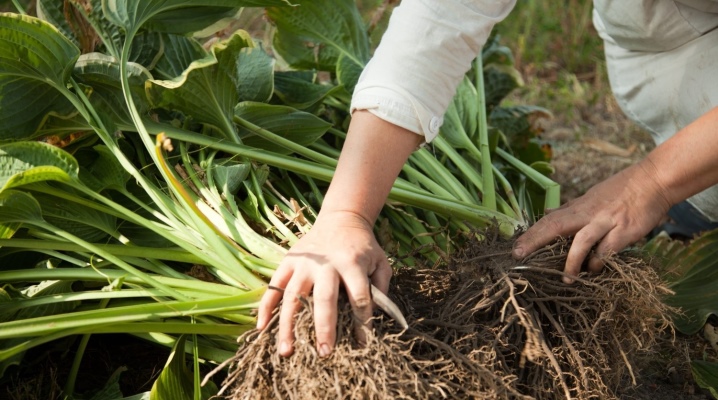
Dividing an adult hosta is the easiest and most productive way to get a new plant of this species. The operation is carried out throughout the growing season, at different times, and has its own subtleties, which will not hurt to know inexperienced gardeners.
When to divide the bush?
Despite the fact that any varieties of hosts can grow in one place for more than 20-25 years, to rejuvenate the plants it is necessary to divide and plant them, in addition, this garden culture quite easily tolerates separation and transplantation. The first sign that the hosta can be divided is the compression of the central part of the crown of the shrub and the cessation of its growth. Vegetative reproduction of hosts by dividing the bush is preferable if the variety is fast-growing and actively forms children. As a result, it is possible to get a large, well-grown shrub in 1-2 years.
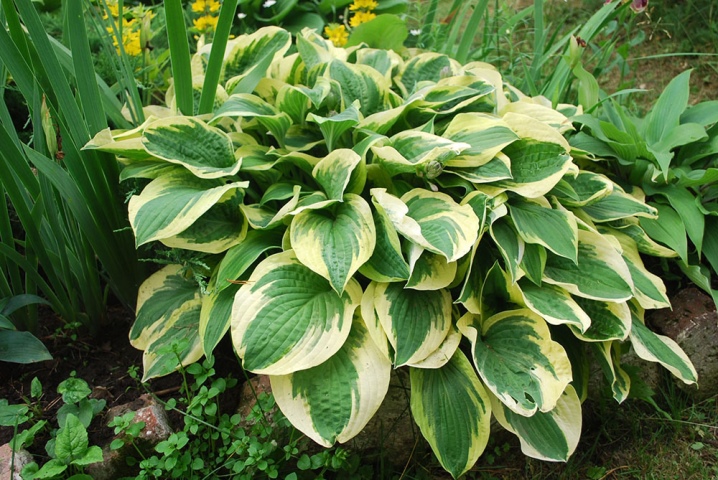
But very young hosts are not suitable for separation and transplantation, even if the hosta bushes have gained volume - the breeding and transplanting procedure can be started only at the age of 4 of the plant. Further, adult specimens are shared every 4-6 years, during which time they have time to gain strength and release strong daughter sockets with healthy and strong shoots. For novice gardeners, it is important to know what the detached host seedlings should be like.
- Delenka is a part of a plant with well-formed roots and 1-2 leaf rosettes. If there are 3-4 of them on the branches, the seedling is considered large. True, it's not even a matter of size, because all planted shoots reach a beautiful decorative appearance by 2 years. But it is more important for the gardener that the plant quickly reaches its maximum size, and in this case it is better to choose not large divisions, but fast-growing varieties.
- It is customary for experts to use single sockets in rapidly growing varieties, and those that grow slowly are divided into large parts.
- Mature bushes at the age of 5-6 years are divided into 4, old ones - into 2-3 parts.
An important nuance when placing separated bushes is planting at the same depth at which the roots of the parent bush were. It is also worth remembering that the frequent division of the hosta leads to the fact that the features of the plant are not fully manifested, therefore, the decorative appearance may not meet the standards.
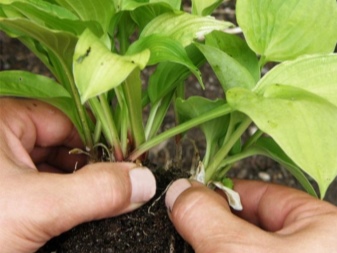
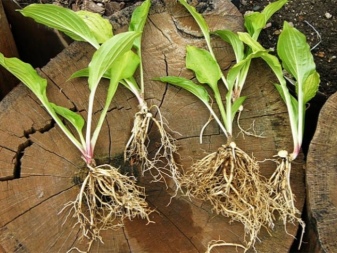
Features of seating at different times
Hosta can be propagated by dividing in the spring, perhaps this is the best time to separate the shoots with roots. Thanks to this, the rejuvenation of the mother bush takes place, which puts its forces on the growth of young branches and larger leaves. The exact fulfillment of the necessary requirements will help to divide the plant correctly.
- You will need to dig in the ground around the hosta. To raise the bush, a gardening fork is used as a lever. With the large size of the shrub and the impressive dimensions of the earthen coma, the gardener will require the help of one more person. When the plant is removed, its roots must be immersed in a solution of potassium permanganate, if necessary, remove snails and slugs from them.
- The division is carried out using a sharp instrument pretreated with an antiseptic. The division occurs along the growth points, while the injured, rotten or dry processes of the rhizome are removed.
- The planting hole is made an order of magnitude deeper and wider than the volume of the roots, which should be located freely in the ground. Additionally, you can add phosphorus, potassium and nitrogen-containing fertilizers to it, which are especially relevant in spring.
- A high-quality planting provides for the elimination of air voids at the rhizome and soil compaction. Since lushly growing bushes create inconvenience when weeding, it is wiser to mulch the ground under them. In addition, it will prevent the soil from drying out and the appearance of some types of pests.

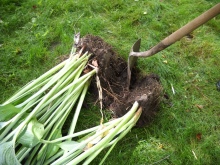
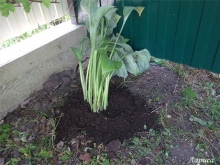
The ideal time for work is mid-April, early May, since later the plant may be susceptible to moisture loss due to hot weather and drought, while it will be in the active growing season. In autumn, the climatic conditions of the region must be taken into account. This is important so that young plants can adapt, grow roots and gain strength before the onset of cold weather. Experienced gardeners believe that it is better to transplant the hosta in September, at least a month before frost. The roots of the plant are dormant, thanks to this host, minimal damage is caused.
However, it is clear that later planting can be hazardous to the health and vitality of the shrub... A feature of the autumn division is the cutting of leaves and the preservation of only stems no more than 15 cm long.
The roots obtained in the fall tolerate storage perfectly if they are placed in moist soil with sawdust, wrapped in foil and kept at 3-5 degrees of heat in a cellar. In this state, they can be kept until spring planting.
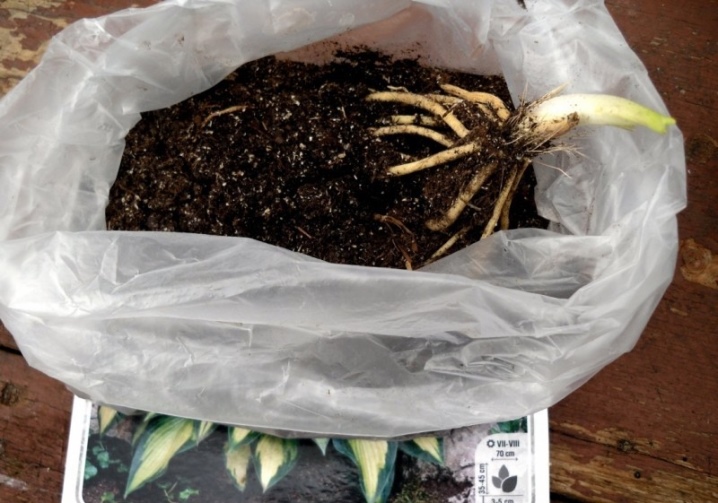
How to plant the host in the summer?
It is permissible to plant the hosta in the summer, in August, after the flowering of the bush. But at the same time, the transplant rules should be followed so that it does not negatively affect the healthy state of the culture.
- Single shoots are not used, since it will take a very long time to wait for growth. It is better to take shoots with 2-3 buds. The foliage is completely removed - this prevents intensive evaporation of water and contributes to the maximum development of the rhizome.
- Before the procedure, abundant watering of the roots of the mother bush is required.
- All sections during separation should be made with a sharp disinfected instrument, then they are coated with greenery and antifungal agents.
- After transplanting, it is very important to create shade for the planted seedlings and keep the soil moist at all times. The division is carried out on a cloudy day or in the evening so that the scorching rays do not leave burns on the cuts.
In the summertime, mineral fertilizers and organic matter, in this case, humus, must be placed in the planting hole. When choosing a place for divisions, they avoid planting them in areas where other garden varieties had previously grown, in order to prevent accidental infection with infections from the roots of the previous culture remaining in the ground.
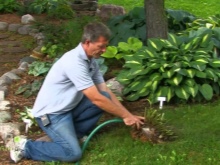
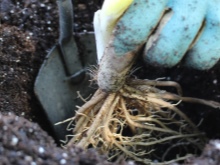

Correct separation and fit
Adult hosts are easy to separate, the main thing is to adhere to the established rules.
- Divide the plant in May, late August, or September.
- Use sharp and sterilized instruments (a spatula or a knife, depending on the size of the hosta).
- In a small shrub, the shoot is cut at a distance of 10 cm from the base, in a large one - 35 cm.
- Before the process, the trunk circle is irrigated and undermined.
- If the roots are not visible, it is allowed to wash off the soil from them.
- Seedlings cannot be cut in half. It is necessary to divide the bush carefully, avoiding damage to the roots.
- Large, sturdy shoots are cut with a sharp, serrated knife.
- Shoot survival can be increased by cutting off the green mass of foliage.
- Too tangled entangled roots are untangled with a garden fork.
- Damaged, problematic parts of the roots should be removed, long shoots should be shortened, and then disinfected with fungicides.
The seedlings are placed in spacious planting holes, deepening so that the shoots without leaves remain on the surface.At the end of the procedure, the earth is compacted and well watered. After that, it is advisable to cover the soil under the divisions with mulch.
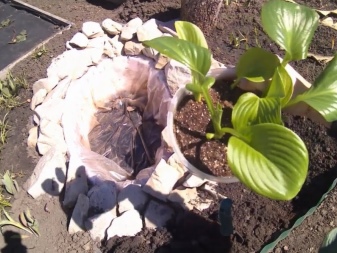
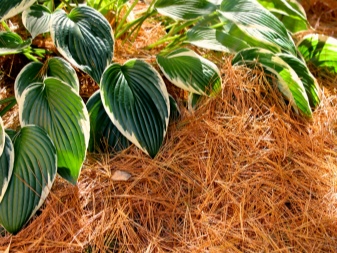
Can be divided without extraction
If the task is not to obtain a large number of divisions, then 2-3 new plants can be separated from the original bush without digging it out completely, which, of course, simplifies the process. To neatly separate shoots with 1-4 rosettes, you need to put a sharp shovel in the center of the root system and cut off the necessary part with roots and foliage with a triangle. Often, the daughter branches are located so that it immediately becomes clear how to carry out the separation, of course, you need to take only the strongest shoots.
When you need one cut, you can simply separate it with your hands, after digging the trunk from the outside. Mature shrubs tolerate this procedure, but young hosts, including 3-year-old specimens, may grow more slowly after division so early.
Therefore, for successful reproduction and transplantation, it is important to observe the main rules regarding agricultural technology and plant age.
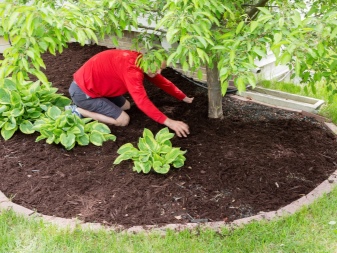

For an illustration of how hosts are multiplied by division, see below.







































































































The comment was sent successfully.